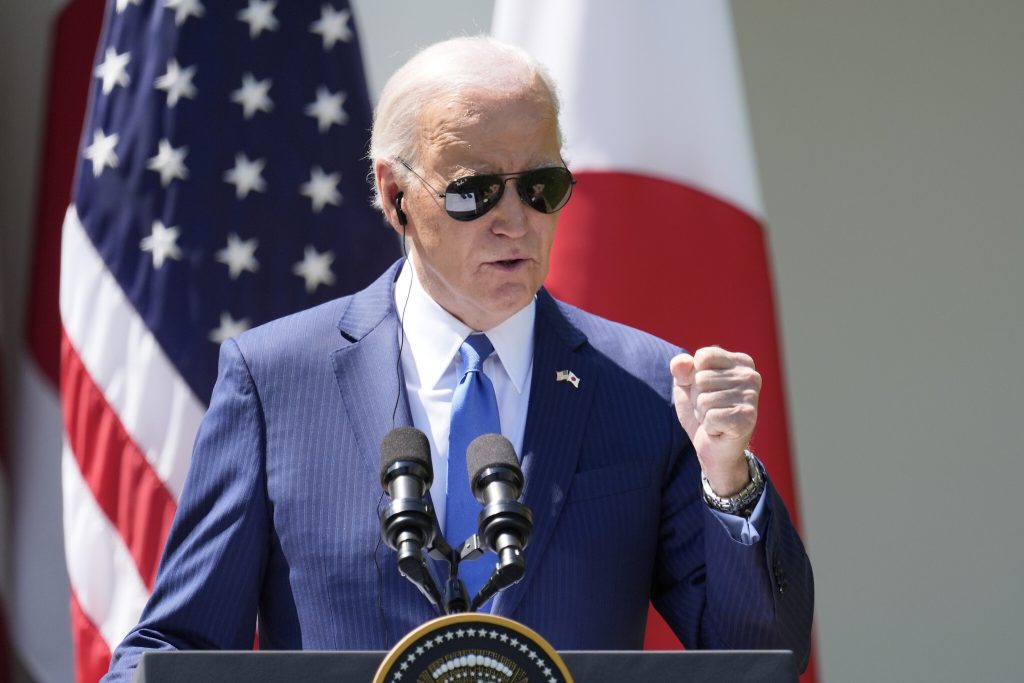Tensions between the United States and Iran have reached a critical juncture, with President Joe Biden issuing a stern warning to the Iranian regime amid fears of a retaliatory strike on Israel. Against the backdrop of escalating tensions and urgent diplomatic efforts to avert conflict, this article delves into the complexities of the situation, examining the underlying dynamics, potential consequences, and the Biden administration’s approach to navigating this perilous geopolitical landscape.
The Stakes at Play: The prospect of an Iranian strike on Israel has raised alarm bells within the international community, sparking concerns of a broader conflict engulfing the volatile Middle East region. With Iran reportedly readying a significant arsenal of missiles and drones, the stakes are high, and the potential ramifications of military escalation are profound. The Biden administration faces the daunting task of balancing diplomatic engagement with robust deterrence measures to prevent further escalation and protect U.S. interests and allies in the region.
Biden’s Direct Message: President Biden’s unequivocal message to Iran — “Don’t” — underscores the seriousness of the situation and the administration’s firm stance against any provocative actions that threaten regional stability. By reaffirming the United States’ unwavering support for Israel and its commitment to defending its ally, Biden sends a clear signal to Tehran that aggression will not be tolerated. However, the president’s remarks also highlight the delicate diplomatic tightrope the administration must walk in managing tensions and avoiding miscalculations that could lead to conflict.
Behind the Scenes Diplomacy: While President Biden’s public admonition of Iran captures headlines, behind the scenes, U.S. officials are engaged in intense diplomatic efforts to de-escalate tensions and prevent a potential crisis. High-level negotiations, diplomatic channels, and strategic communications are being leveraged to convey the gravity of the situation to Iranian counterparts and explore avenues for diplomatic resolution. The goal is to find a path forward that preserves peace and stability in the region while addressing legitimate security concerns on all sides.
Military Posturing and Deterrence: In addition to diplomatic efforts, the United States is bolstering its military presence in the region as a deterrent against Iranian aggression. The deployment of troops, ships, and aircraft underscores America’s commitment to defending its interests and allies in the face of external threats. By enhancing its defensive capabilities and signaling readiness to respond decisively to any hostile actions, the U.S. aims to deter Iran from pursuing a course of action that could have devastating consequences for regional security.
The Human Cost of Conflict: Amidst the geopolitical maneuvering and diplomatic brinkmanship, it is essential to remember the human cost of conflict. Any escalation in tensions or military confrontation risks exacerbating humanitarian crises, displacing innocent civilians, and inflicting untold suffering on the people of the region. As policymakers weigh their options and chart a course forward, the imperative of prioritizing diplomacy, dialogue, and de-escalation cannot be overstated.
The current standoff between the United States and Iran represents a critical test of leadership, diplomacy, and crisis management on the world stage. As tensions simmer and the specter of conflict looms large, the stakes are too high for brinkmanship or rash actions. President Biden’s warning to Iran underscores the gravity of the situation and the imperative of finding peaceful resolutions to complex geopolitical challenges. In the days ahead, the world will be watching closely as policymakers navigate the treacherous waters of international diplomacy and strive to safeguard peace and security in the Middle East and beyond.
